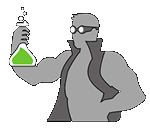How Does Lactate Tolerance Training Unlock Stubborn Fat?
The idea behind this training is to generate as much lactate as possible (a.k.a. lactic acid), which results in a substantial Growth Hormone spike in the body. GH acts like a set of keys for your stubborn fat cells.
The exact method is what I call "Power Start Stability Drop Lactic Acid Training" because of the main goal (lactate production) and the means by which you extend the lactate production (moving from less stable exercises to more stable exercises as your stabilizers fatigue).
And yes, this framework can absolutely be applied to just about any other muscle group. For shoulders (as an example), you could do dumbbell shoulder press, barbell military press and machine shoulder press. For biceps, you could do dumbbell curls and barbell curls (and machine curls, if you have a machine).
It's really very simple...all you need to remember is go from least stable to most stable with each change/drop.
Let's Get to Trashing Your Legs With Lactate Tolerance Training...
Your first exercise is a dumbbell squat. The way we're going to do this one is by holding a dumbbell vertically between your legs, not at your sides. I find this helps keep the focus on the quads and not the lower back (which can happen with the dumbbells at the sides...it turns into a dumbbell deadlift).
I'm using a 125 lb dumbbell for this.
Grip under the top set of plates and CRANK out the reps as fast as you can. We're looking for a powerful movement with no real focus on the negative portion of the rep. This is going to generate the most lactate.

As you come down to the bottom position, your elbows will bend and your forearms will be resting somewhat on your thighs. This is totally fine as the load is still being placed on your quads. It's necessary to keep the dumbbell from hitting the ground, which would release the tension (which is what is most important to avoid).

When you've done as many as you can and the burn has shut you down, rest 20 seconds and grab a weight that's about half of the first one. I'm using a 65 lb dumbbell.
The key with this next set is to keep continuous tension on the quads by not coming up all the way to full lockout and keeping a slower, steadier pace, focusing on form.


Do as many reps as you can before the burn shuts you down. Rest 20 seconds then repeat one more time.
Here's where this round for legs differs a bit...I have a squat machine, so I'm going to add that in as another Stability Drop. If you do a third "machine drop" like this, only do 2 sets of the light weight instead of 3. If you're just going from dumbbells to barbell squats, stick with 3 light sets.
Your next exercise is barbell squats. I've got 135 lbs pre-loaded on the bar. Keep in mind, this training is not about impressing anybody with how much weight you have on the bar. It's about chasing the burn. And believe me, even with a relatively light "warm up" weight like this, it will BURN.
Use a fast pace for this set, cranking out reps without worrying about the negative.


When you're finished the power set, remove half the weight (I'm dropping to 70 lbs on the bar, which is extremely light).

Now perform continuous tension, 3/4 squats (the bottom 3/4) with that weight, using a steady pace and no lockout.


Do as many reps as you can, the rest 20 seconds, then repeat once more.
Now we go to the last Stability Drop...machine squats.
I've got 2 plates loaded on the machine, which with it's leverage is roughly equivalent to about 140 lbs or so. If you're going to use a machine like this, try to test it beforehand to get an idea of what weight feels similar to the barbell squat weight.
Using the machine is going to allow to focus on just PUSHING, without worrying balancing any bar, dumbbell or your body.
You've accumulated a lot of lactate already, so I can promise you this will be BRUTAL.


Get as many powerful reps as you can here then remove about half the weight (I just took a plate off each side), rest 20 seconds then go again.

Again, for the light sets, these are steady-pace, continuous-tension, non-lockout reps. The continuous tension prevents lactate from getting cleared from the legs.


When you've done as many reps as you can, then rest 20 seconds. Then repeat one more time and PUSH yourself to get as many reps as you can possibly get.
This is a machine and you don't have to worry about getting stuck under a weight so dig deep here.
This is likely what you will look like at the end of the set...if you're able to walk normally right away, then you didn't push yourself hard enough.

Overall, this training method makes for a KILLER fat-loss workout.
If you perform this method for chest and back in the same sessions, you've got all the big muscles groups covered for maximum lactate production. You could follow up with a second day focusing on just the smaller parts (shoulders, biceps, triceps, calves) as well.
---
And if you like this workout, you'll LOVE these ones...
Share This Page...
Want More Training and Nutrition for Fat Loss?
You'll find it here...



